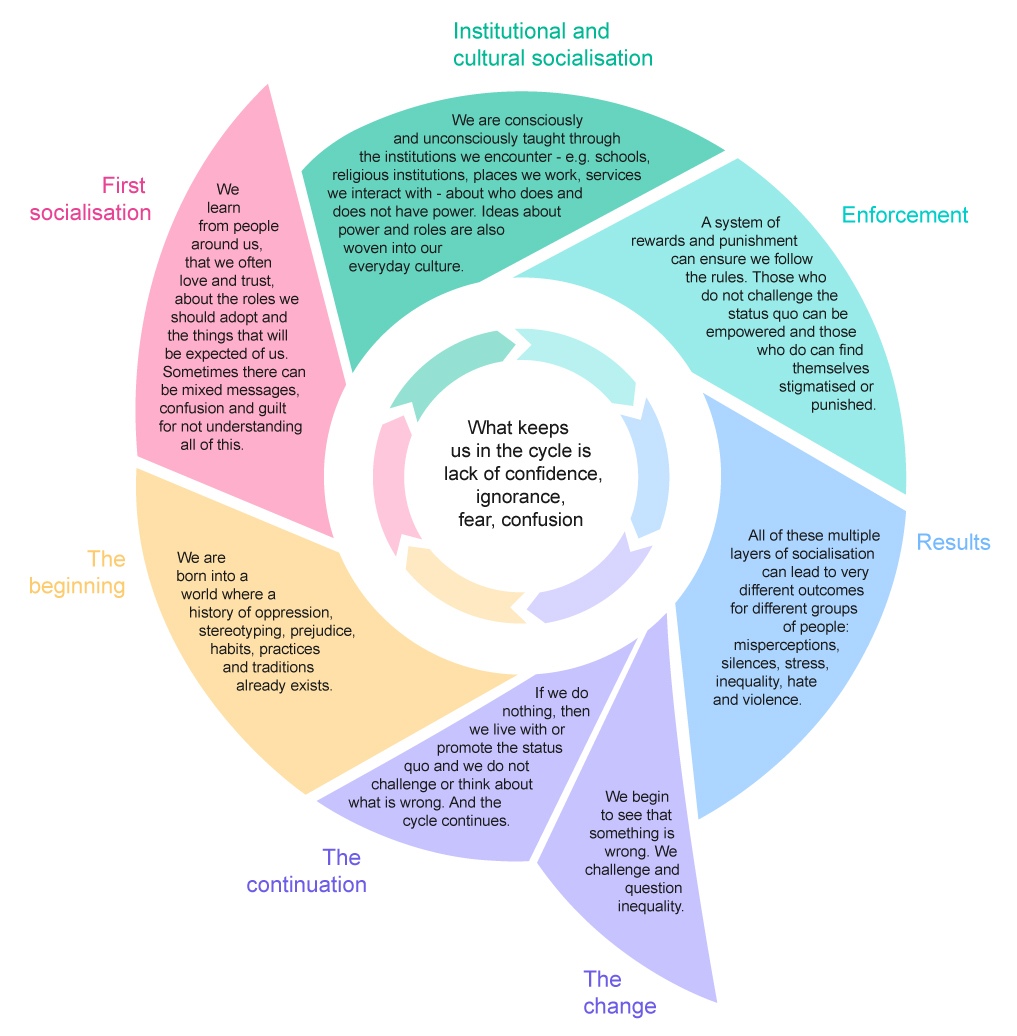How does our mind work and how can it lead to bias?
A simple analogy for understanding how our minds work is to think of them as being made up of lots of pockets of information. We can think of our mind placing every experience we have into a specific pocket. Our mind is always hard at work categorising our experiences and sorting them out into different pockets, while we carry on with our everyday lives.
This happens from childhood. It is one of the ways that we make sense of the world around us and learn how to react to it the next time we have similar experiences. Our mind naturally groups certain experiences together based on what we thought, how we felt and how we behaved when we were having the experience.
This happens automatically because our brain has so much information to process and we need a way of dealing with it all, without us having to consciously think about absolutely everything. It can be a very efficient, unconscious shortcut. The less conscious parts of our mind help us do this and give us access to this information when we need it to help make our decisions.
However, this process does create a problem. It means we make choices in the present moment that are actually based on our past experiences.
So, even though we may be unaware that our mind is helping us to make decisions in this way, this process can shape our biases towards certain people, places and situations in a negative or positive way.
This is why we need to understand bias and seek to make our more unconscious biases conscious, so that we can reflect upon them, challenge them where we need to, and reduce their potential to skew our decision-making. The more we can understand and reflect upon our biases the more we are likely to make fairer decisions.
Activity
Here are some videos that you could watch that help to explain what happens inside your mind.
externalHow does bias work?
Positive bias occurs when we feel something matches our own thoughts and ideas, or is familiar to us and we are naturally drawn to it. Whereas negative bias occurs when something is different from what we are familiar with or what we think is best or normal.
There are many other factors beyond our own past experiences that can play a part in forming our biases. For example, the way in which certain situations, issues and groups are routinely framed and described in the media can have an impact on the way we interpret the world.
A bias can influence us to think that someone is less capable or trustworthy, or it can generate something as subtle as feeling uncomfortable around a certain person. But remember that biases are be based on previous or other experiences, not on the situation in front of us.
For example, we may have had an experience of working with people who have religious beliefs that are different to our own, who belong to a different age group, who have a lot of tattoos, who wear a certain type of clothing, who speak in a different way to us, who have a different colour of their skin or an entirely different culture to our own.
Without us realising it, as a part of its processing of previous experiences, our mind may have automatically made a connection between one or more of these factors and a previous experience and stored that connection away in our brain. This may lead to us having an unconscious bias for or against a certain individual we encounter in the future. This could be a colleague at work or a candidate we encounter in an assessment or recruitment event. Our biases, based on connections forged from previous experiences, can affect what we think of and how we respond to people in the future, regardless of their own skills and capabilities.

Graphic showing the cycle of socialisation
Click to read the image transcript
The beginning
We are born into a world where a history of oppression, stereotyping, prejudice, habits, practices and traditions already exists.
First socialisation
We learn from people around us, that we often love and trust, about the roles we should adopt and the things that will be expected of us. Sometimes there can be mixed messages, confusion and guilt for not understanding all of this.
Institutional and cultural socialisation
We are consciously and unconsciously taught through the institutions we encounter – e.g. schools, religious institutions, places we work, services we interact with – about who does and does not have power. Ideas about power and roles are also woven into our everyday culture.
Enforcement
A system of rewards and punishment can ensure we follow the rules. Those who do not challenge the status quo can be empowered and those who do can find themselves stigmatised or punished.
Results
All of these multiple layers of socialisation can lead to very different outcomes for different groups of people: misperceptions, silences, stress, inequality, hate and violence.
The change
We begin to see that something is wrong. We challenge and question inequality.
The continuation
If we do nothing, then we live with or promote the status quo and we do not challenge or think about what is wrong. And the cycle continues.
The core
What keeps us in the cycle is lack of confidence, ignorance, fear, confusion.
Activity
Here are some videos you could watch about trying to understand how culture drives behaviour and another about understanding ‘white privilege’.
externalConscious Inclusion by National School of Healthcare Science is licensed under a Creative Commons Attribution-ShareAlike 4.0 International License.